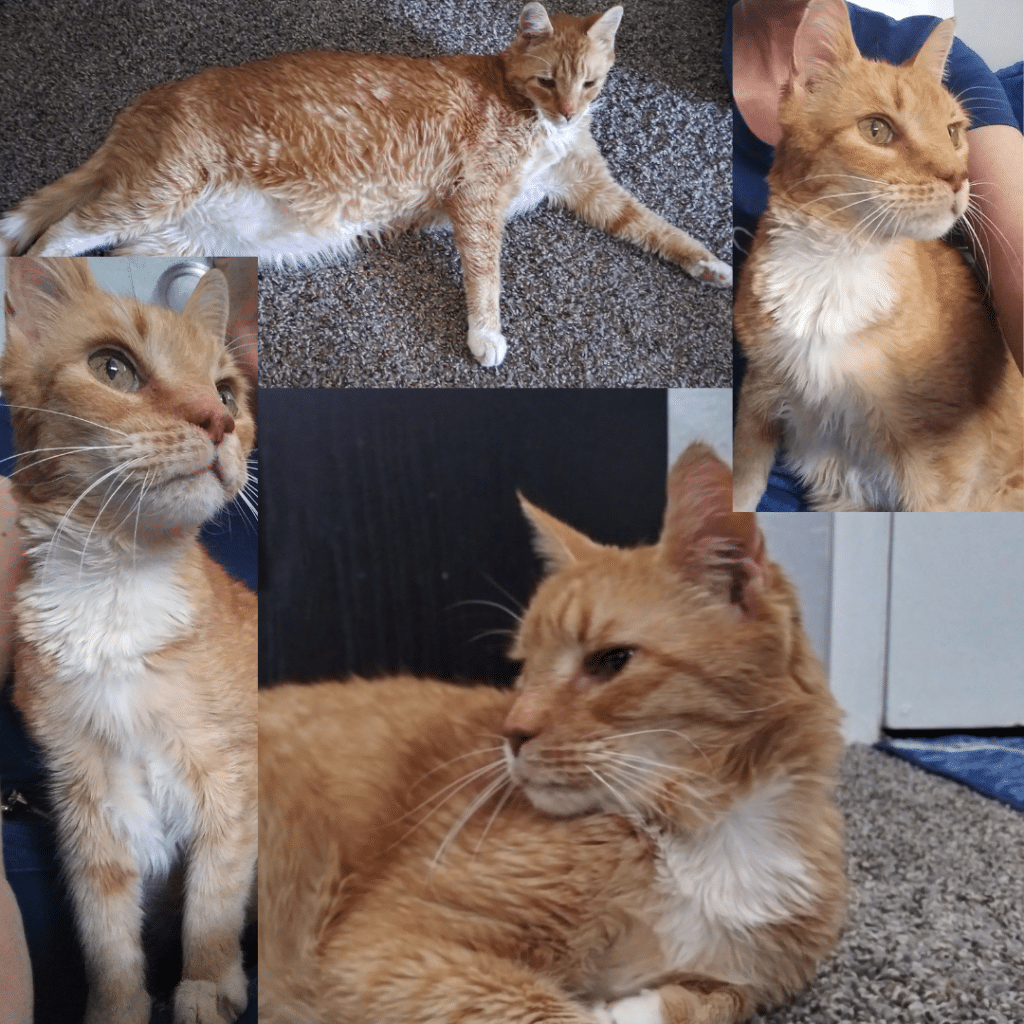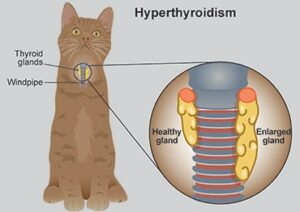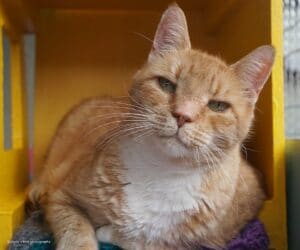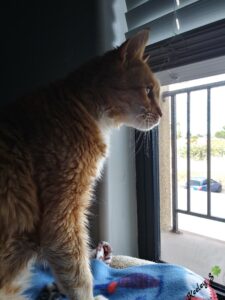
Hyperthyroidism in Cats 101
You may have heard of hyperthyroidism in people, but did you know that cats can have this medical condition too?
Hyperthyroidism is usually caused by a benign tumor on the thyroid gland which causes the gland to get enlarged and secrete an excess amount of thyroid hormone. Hyperthyroidism is a common kitty disease, and it mostly affects older cats.
Because thyroid hormones (T3 and T4) affect almost all of the organs in the body, hyperthyroidism often caused secondary issues.
The most common clinical signs of hyperthyroidism are weight loss, increased appetite, and increased thirst and urination, and eventually, tachycardia (elevated heart rate). These symptoms may be subtle at first and worsen as the disease progresses.
If you suspect your kitty has hyperthyroidism, take them to the vet. Your vet will do a physical exam, check your cat’s blood pressure and heart, and will likely also order bloodwork.
Once your cat is diagnosed, there are three treatment options:
- Surgery – While surgical removal of the thyroid glands (thyroidectomy) will provide a permanent cure for most cats, surgery is not often advocated for because of the other risks (especially to senior cats and cats with other preconditions).
- Medication – Drugs can be given to your cat daily to help reduce their thyroid production. Medication will not cure hyperthyroidism, but will provide short- or long-term control of the disease.
- Radioactive Iodine Therapy (I-131) – If available, this is the preferred treatment of hyperthyroidism in cats.
I-131 Therapy:
“During treatment, radioactive iodine is administered as an injection and is quickly absorbed into the bloodstream. The iodine, which is required for the production of both T3 and T4, is taken up by the thyroid gland and the emitted radiation destroys the abnormal thyroid tissue without damaging the surrounding tissues or the parathyroid glands. The majority of cats treated with radioactive iodine have normal hormone levels within one to two weeks of treatment” (Cornell Feline Health Center).
I-131 Therapy is 80-95% effective with only a single dose, has no serious side effects, and does not require the cat to be put under anesthesia for the procedure. While this treatment can be cost prohibitive, it provides a cure and does not require owners to administer daily medication (which can be stressful for kitty and owner).
Although the radioactivity is not harmful to the cat, precautionary measures are put in place to protect people and other animals that may encounter the patient. The cat will likely need to stay at the treatment facility for a few days post-treatment and then quarantined from other animals for a couple of weeks once home. Additionally, because the patient’s waste will also contain radioactive material, it will need to be disposed of as hazardous waste.
“Radioactive iodine therapy is curative within three months of therapy in approximately 95 percent of all hyperthyroid cases. In cases where radioactive iodine therapy is not successful, the treatment can be repeated” (Cornell Feline Health Center).
At The Hermitage, we have several hyperthyroid kitties in residence. We often choose to medicate these cats due to cost restrictions, however, we recently had a donor sponsor the I-131 Therapy treatment for one of our senior cats, Camelot.
Watch our educational YouTube video to learn more:
Camelot’s Story
Camelot, who is a handsome 14-year-old Mature Meower, came to our shelter in 2017 after his owner passed away. Although Camelot enjoys chin scratches and attention, he also likes to live life on his own terms. He enjoys a laidback lifestyle as he reaches his golden years, and you will usually find him soaking up sun puddles or enjoying the air-conditioning on hotter days.

Lounging in a sun puddle is where Camelot was when he first met George Gray (announcer of The Price is Right and big time cat-lover). After hearing about Camelot from his brother, Dorian, who is a Hermitage volunteer, George knew he wanted to do something to help this senior kitty find a second chance at forever.
George ended up initiating and helping fund Camelot’s I-131 therapy. This procedure means that Camelot will no longer have to be medicated twice a day, making him a lot easier for a potential adopter to handle. George and Camelot had a great first meeting the weekend before Camelot was to undergo his I-131 therapy; they interacted as though they were old pals.
Camelot returned to the shelter about a week and a half ago after his I-131 therapy. He was in good spirits and just wanted to be loved on. He stayed in a transition room because he (and his waste) were technically radioactive for a couple of weeks post-procedure. He then went to stay with a foster until the radioactive treatment is completely out of his system.

Camelot is currently settled into to his foster home! His foster mom said, “He is very relaxed and VERY affectionate- purrs nearly non-stop. He’s eating well just as he does at Hermitage. He enjoys looking out the windows in his room while sprawling on the floor- even though he has more than enough comfortable spots.” She reported that Camelot also seems more playful and energetic post-procedure, which is an encouraging sign.
Camelot will stay in foster care for a couple more weeks until the radioactivity is completely out of his system and the process has had time to take full effect. He will then have his thyroid rechecked and return to The Hermitage. Once we are sure his I-131 treatment worked, he will be ready to be adopted!
